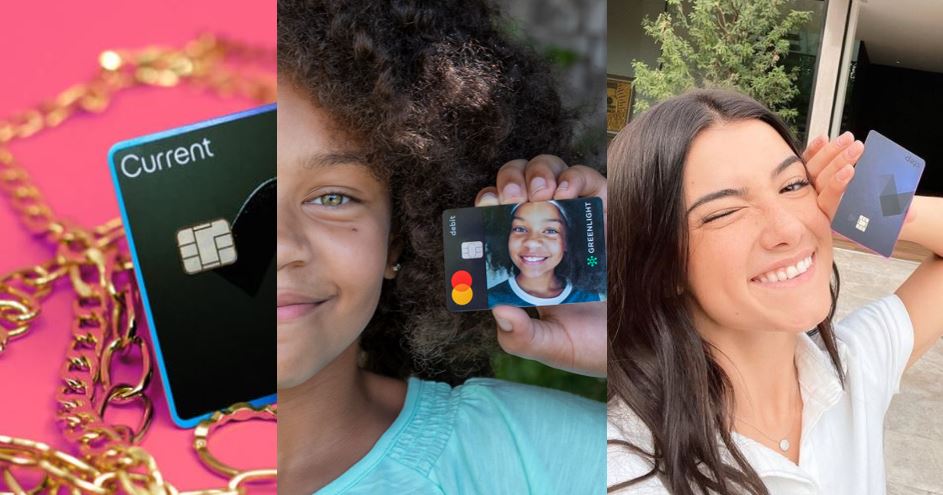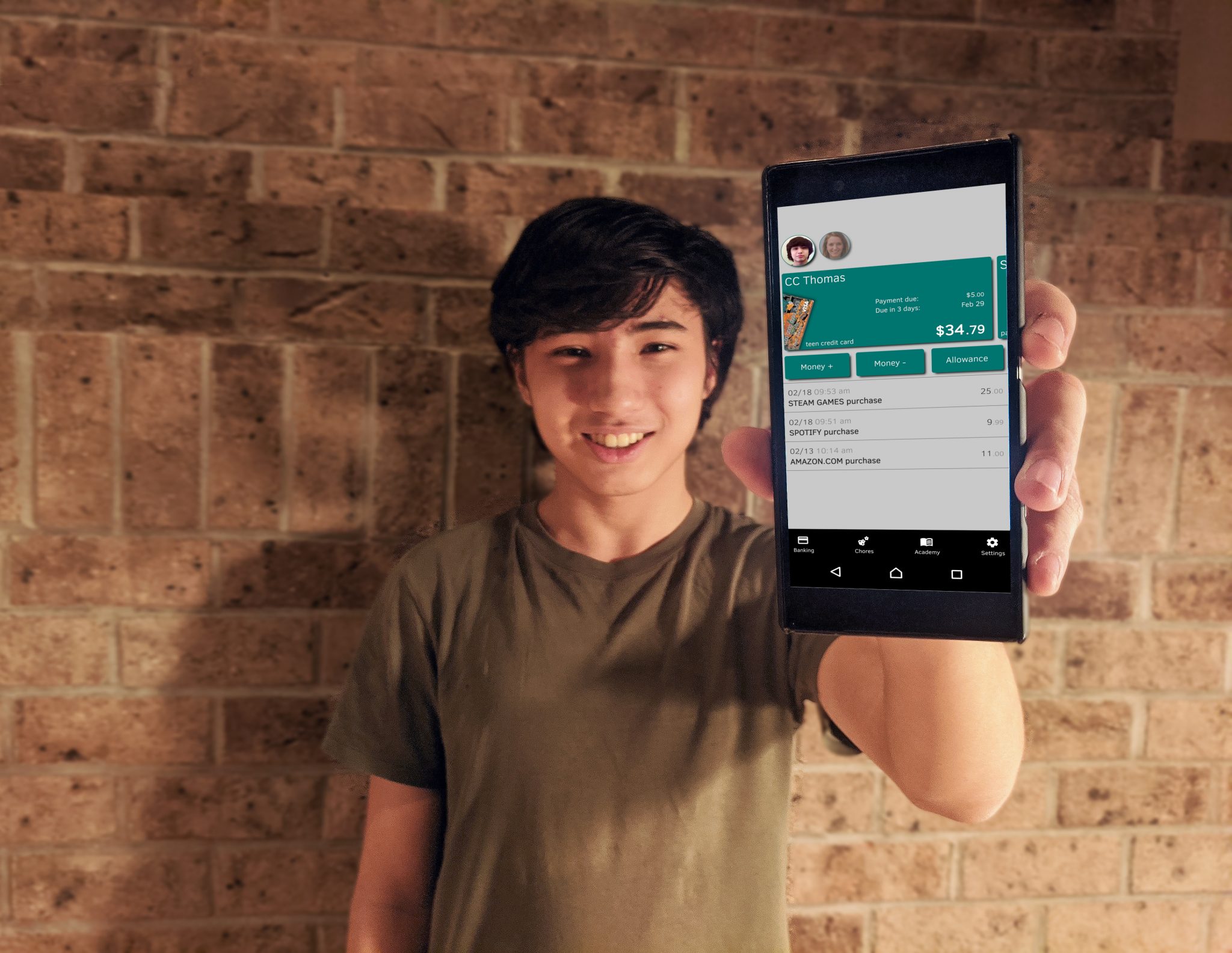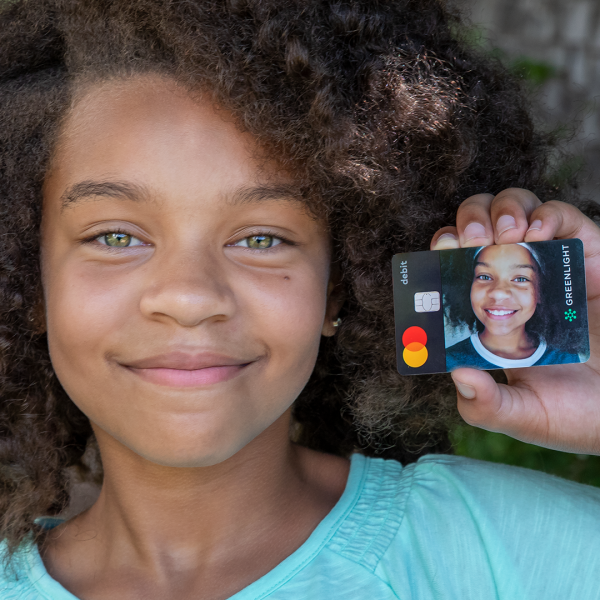Greenlight, Step and Current land “kids banking” industry collective $580m
Three US fintech start-ups focused on providing banking products to kids and teens all landed fundraising rounds this week, racking up to a collective $580 million.
JPMorgan-backed Greenlight has raised a $260 million Series D led by Andreessen Horowitz at a valuation of $2.3 billion. The round, first reported by The Information earlier this month, has nearly doubled Greenlight’s unicorn valuation from its last round in September 2020.
The same investor, Andreessen Horowitz, also led Current’s $220 million Series D. Current now sits at a $2.2 billion valuation – triple the valuation of its last funding round in November, which sat at around $750 million.

Greenlight, Current, and Step all began with basic card-based offerings
Step’s Series C round raised $100 million. Led by General Catalyst, Step also gained an investor in US payments fintech giant Stripe. Celebrities Will Smith and Jared Leto also count themselves as investors.
A rapidly evolving market
In the last year, a wealth of fintechs have either started up or significantly grown within the kid banking space. Others in the US include Copper, Jassby, and AWSM.
But the offerings vary vastly in scope, from simply issuing a debit card to kids with parental controls, right through to curriculum-based services with bite-size video lessons on finance.
Greenlight, Current, and Step all began with basic card-based offerings. They have since layered these cards with additional features – though some are still in the early stages of launch.
Four-year-old Greenlight allows parents to turn allowances on autopilot. In its paid-for plans, kids have been able invest via an “educational platform” since January and are protected from identity theft.
Current, which also launched in 2017, now offers free overdrafts, automated savings, cashback, and money management. Whilst it began with teen banking products, Current shifted its focus to adults two years ago.
“The average age of our customer is 27,” a spokesperson tells FinTech Futures. They added that teen banking was its first product because that demographic “needed less functionality”.
With its latest investment, Current is looking towards opportunities in the cryptocurrency space.
Step, the youngest of the three start-ups to land funding, also offers a rewards scheme and the ability to build up “positive credit”.
But some feel that these fintech start-ups are still “playing safe”. AskHomey CEO and former chief digital officer at Temenos, Dharmesh Mistry, tells FinTech Futures this it’s okay “until you have to show profitability […] where are they going to get that from?”
He adds: “Monzo has only been able to get there through lending, and none of these [Greenlight, Current or Step] are going to do that. So, they have to be more creative with their business model, and I suspect that is only possible outside of banking.”
Monzo has written about the success of its premium plans. Last month, it announced that 135,000 customers are now paying £5 or £15 a month. An increase of 35,000 paying customers between early December and mid-March. But that means still only 2.7% of Monzo’s five million customer base now pay.
Burgeoning customer bases
All three start-ups have significantly grown their customer bases. Step claims it is now sitting on 1.5 million users after less than six months in the market.

TikTok star Charli D’Amelio posing with a Step card
TikTok star Charli D’Amelio, one of Step’s investors, has been promoting the fintech service to her 100-million-strong fanbase. The start-up targets 13-18-year-olds – rather than them plus their parents – and doesn’t currently charge a monthly fee.
Greenlight claims three million “household” customers, all of which pay subscription fees that drive the bulk of its revenue.
Families with five kids or less pay $4.99 each month for Greenlight’s core offerings, or up to $9.98 a month if they want investing and identity theft protection included.
The CEO Tim Sheehan tells Forbes: “It’s been a whirlwind. I’m kind of blown away by it all, to be honest. It feels like 10 years, but it’s been just four.”
The company is, at present, on a 300-person hiring spree, after claiming to have tripled both revenue and customers last year.
But as CEO and founder of digital banking provider Agora, Arcady Lapiro, points out to FinTech Futures: “The reality is even if these companies have ‘millions of users’, they often count parents who don’t have an account nor are spending on the account.”
Lapiro adds that “since teens’ transactions average around $10-15 and [generate] almost no deposits, [fintechs] need to promote more spending to generate income.”
His maths suggests Greenlight has more like 1.15 million cardholders – on the basis that the average number of children per family in the US is around 1.9.
Looking at Greenlight’s new valuation of $2.3 billion, he estimates it puts the value of each young cardholder at $2,000. “And again, these users’ average spending is $10-15 and no saving, lending, foreign exchange, etc. That’s insane when you consider Monzo, Revolut, and N26’s cardholder values are closer to $700.”
Current, which partners with YouTube creator Jimmy Donaldson – aka MrBeast – claims three million users too. Up from one million just last June.
The fintech had an early focus on teens. But as former Morgan Stanley trader and Current CEO, Stuart Sopp, says, roughly 90% of the business is now focused on adults.
Going beyond banking
The kid-focused banking sector easily spills into the edtech space. Another fast-growing vertical buoyed along by the pandemic-induced push to remote study.
Greenlight launched its educational investing platform for kids in “Greenlight Max” in January.
Upon launch, CEO Sheehan said: “Investing is one of the most important pieces of the personal finance puzzle. That’s why we launched Greenlight Max — so parents can lay the foundation for building generational wealth.”

“Saving is nonsensical because you [as a child] earn next to nothing”
“We’re not a fintech which adds education into it, we’re an edtech company with fintech in it as well. This is very different, because we’re not just a teen card or a wallet,” AWSM’s co-founder and chief technology officer (CTO), Alibek Junisbayev, told FinTech Futures in March 2020.
AWSM’s offering includes 100 courses – which count for two years-worth of content – alongside a full-service-banking suite.
Greenlight’s edtech platform is focused purely around trading. It allows children to research stocks with analysis powered by Morningstar. As well as learn from in-app content, propose investments with parental approval, and track portfolio performance.
Whereas AWSM’s covers loans, mortgages, credit cards, and savings – as well as investments.
“Saving is nonsensical because you [as a child] earn next to nothing,” says Mistry. “Kids have got convenience today through PayPal and Apple Pay. They feel comfortable with crypto because of gaming. These are big behavioural changes not being exploited.”
The financial education gap is a global opportunity. And one private fintechs are solving a lot faster than schools and governments.
It’s also been proven that solving the financial education gap will, in turn, help to close the Black wealth gap. In the US, this gap stood at $165,000 between white and Black households. That’s according to Council for Economic Education data from 2019.
Looking ahead to adulthood
AWSM told FinTech Futures it intends to change as the teenagers which use its platform grow up. The edtech intends to roll out courses and products which support their customers’ university financial life and family planning.

High street banks are hot on these fintech start-ups’ heels
A big opportunity which investors are now identifying in these fintechs is the ability to acquire customers at a far younger age than the first wave of challenger banks could.
Thus, breaking the loyalty barrier left by big traditional banks that the Monzos, Revoluts, and Chimes have struggled to push through.
Back in October, Revolut’s CEO Nik Storonsky told The Telegraph following the launch of its Revolut Junior service: “In terms of engagement, it’s great.”
He added: “Imagine you can convert all these kids in 10- or 15-years’ time to full bank accounts. In a longer-term game, that’s the way forward.”
Players like Revolut have added their junior banking service in the hope that their millennial adult customers will open Revolut accounts on behalf of their children.
It remains to be seen which model will win out. That is, whether targeting solely the kids, solely the parents, or both, will acquire the most customers.
But high street banks are hot on these fintech start-ups’ heels. Platforms like Finastra offer traditional financial institutions access to business-to-business offerings like ‘Agora Teenz’, a white label teen-focused banking solution targeted at banks and credit unions.
Agora’s CEO Lapiro thinks there could be some “fear of missing out” going on in these recent three funding rounds for Greenlight, Step, and Current. “A fear to miss the ride thus the valuation,” he says.
Read next: US challenger for teens Copper lands $4.3m











































